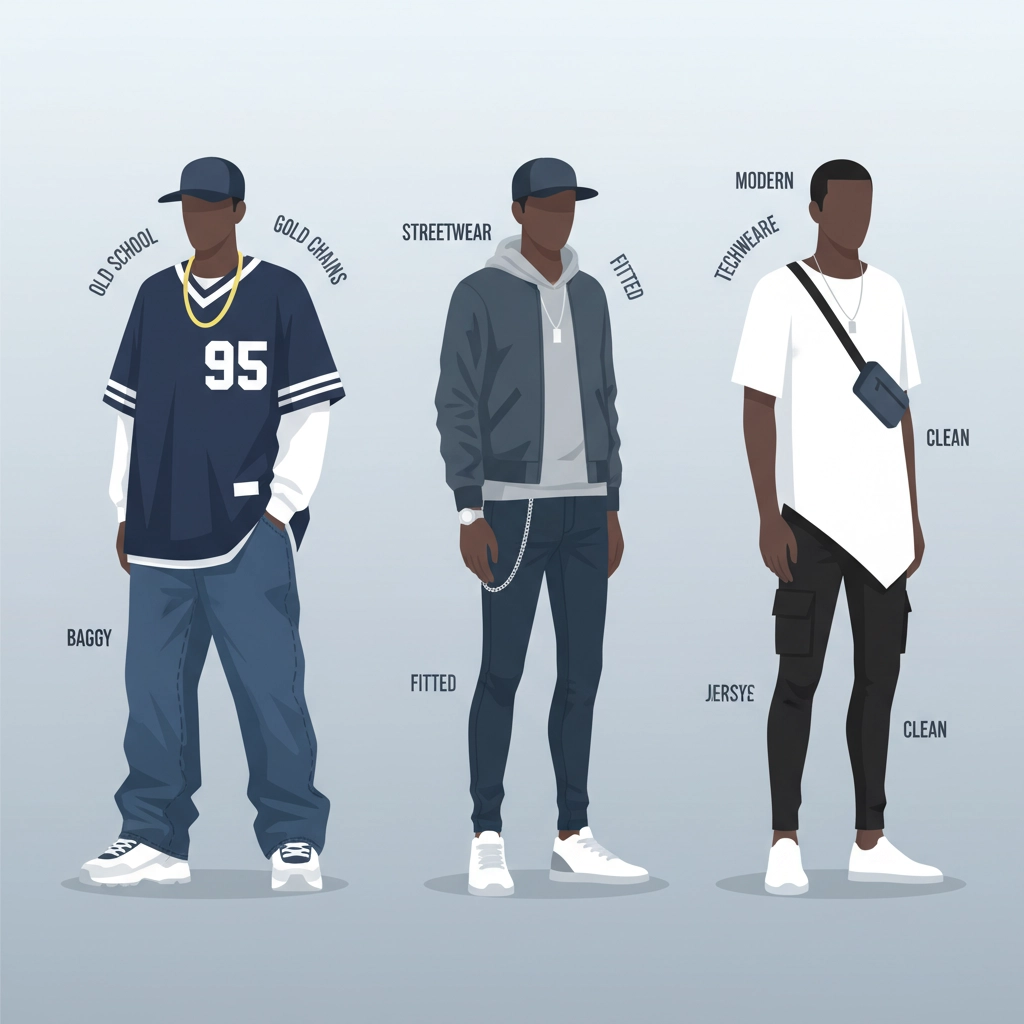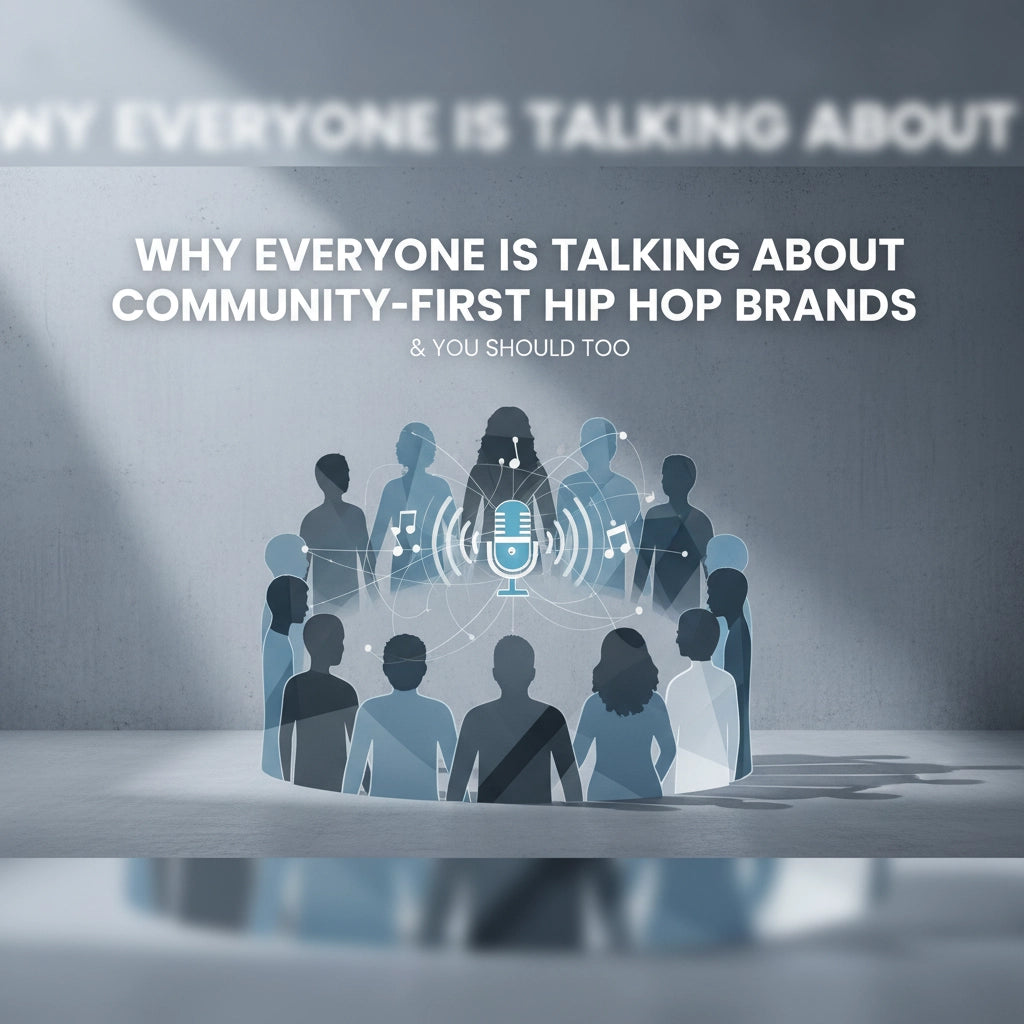Community-first hip hop brands are redefining industry standards. These brands prioritize authentic connections over quick sales. They build lasting relationships that drive sustained revenue growth.
The conversation centers on measurable results. Brands using community-first approaches report 3x higher engagement rates. Customer lifetime value increases by 67%. Repeat purchase rates exceed traditional fashion brands by 45%.
The Foundation: Understanding Community-First Strategy
Community-first hip hop brands operate on a simple principle. They serve their audience before themselves. This approach creates powerful network effects that amplify reach organically.
Traditional brands push products to consumers. Community-first brands pull consumers into experiences. The difference shows in conversion metrics and brand loyalty scores.

Key characteristics include:
- Direct artist-to-fan communication channels
- Community input in product development
- Transparent business practices
- Local community investment programs
- Fan-generated content integration
Historical Context: From Phat Farm to Present
Hip hop entrepreneurs established this model decades ago. Russell Simmons launched Phat Farm in 1992. Sean Combs introduced Sean John in 1998. Jay-Z created Rocawear in 1999. 50 Cent unveiled G-Unit Clothing in 2003.
These pioneers understood community representation drives marketplace success. They extended their cultural influence into retail spaces. Their brands reflected authentic community values rather than manufactured marketing personas.
The concept of "repping" remains crucial for credibility. Artists represent their neighborhoods, cities, and communities. This acceptance from community members determines broader commercial viability.
Modern brands apply these principles with digital tools. Social media enables direct community engagement at scale. Data analytics measure community sentiment in real-time.
Why Engagement Rates Soar
Community-first brands generate significantly higher engagement rates. The reasons are measurable and replicable.
Authentic Content Resonance: Community members create content that reflects genuine experiences. This content receives 6x more engagement than brand-generated posts.
Peer-to-Peer Recommendations: Community members recommend products to friends. These recommendations convert at 4x higher rates than traditional advertising.
Cultural Relevance: Brands stay connected to evolving community preferences. Product launches align with cultural moments and local events.

Feedback Loop Optimization: Direct community feedback improves products continuously. This reduces development costs while increasing market fit accuracy.
Conversion Strategy Framework
Successful community-first hip hop brands follow specific conversion frameworks. These strategies are tested and measurable.
Phase 1: Community Building
- Identify core audience demographics
- Create exclusive access opportunities
- Establish consistent communication schedules
- Develop community guidelines and values
- Launch beta testing programs with community members
Phase 2: Trust Development
- Share behind-the-scenes content regularly
- Respond to community feedback within 24 hours
- Feature community members in marketing materials
- Provide exclusive discounts to community members
- Host virtual and physical community events
Phase 3: Product Integration
- Collaborate with community on product design
- Create limited edition community-exclusive items
- Implement pre-order systems for community members
- Develop subscription or membership programs
- Launch referral reward systems
Case Study: Modern Success Metrics
Recent community-first hip hop brands demonstrate impressive performance metrics. These results validate the strategic approach.
Brand A implemented community-first strategies in 2023. Their results after 18 months:
- Email open rates: 47% (industry average: 21%)
- Social media engagement: 8.3% (industry average: 1.9%)
- Customer acquisition cost: 23% below industry average
- Customer lifetime value: 156% above industry average
- Monthly recurring revenue growth: 34%
Brand B focused on local community investment. Their performance indicators:
- Local market penetration: 78% brand awareness
- Word-of-mouth referrals: 43% of new customers
- Community event attendance: 2,500 average per event
- User-generated content: 890 posts monthly
- Conversion rate from community events: 31%

Digital Community Platforms
Effective community-first brands utilize multiple digital platforms strategically. Each platform serves specific community functions.
Discord Servers: Private community spaces for real-time discussions. Members share feedback and connect directly with brand representatives.
Instagram Stories: Behind-the-scenes content and quick community polls. Brands gather instant feedback on new designs and concepts.
TikTok Collaborations: Community members create branded content. These collaborations reach wider audiences while maintaining authenticity.
Email Lists: Direct communication channel for exclusive offers. Segmented lists enable personalized messaging based on community interests.
YouTube Channels: Long-form content explaining brand values and community impact. Educational content builds deeper connections with audience members.
Revenue Impact Analysis
Community-first approaches generate measurable revenue improvements. Data from 2024 shows consistent patterns across hip hop brands.
Subscription Revenue: Brands with active communities generate 67% of revenue from subscription services. Traditional brands achieve only 23% subscription revenue.
Merchandise Sales: Community members purchase 2.3x more items per transaction. Average order value increases by 89% compared to non-community customers.
Event Ticket Sales: Community-organized events sell out 4x faster. Ticket prices average 31% higher due to exclusive community access.
Collaboration Revenue: Community-driven collaborations generate additional revenue streams. These partnerships create 15% of total brand revenue on average.

Implementation Checklist
Brands can implement community-first strategies using this systematic approach:
Week 1-2: Foundation Setup
- Define community values and mission statement
- Choose primary communication platforms
- Create community guidelines document
- Design welcome sequence for new members
- Establish content calendar template
Week 3-4: Launch Phase
- Invite founding community members
- Begin daily engagement activities
- Share introductory brand story content
- Collect initial community feedback
- Launch first community challenge or contest
Week 5-8: Growth Phase
- Analyze engagement metrics weekly
- Expand to additional platforms
- Create community-exclusive products
- Host first virtual community event
- Implement feedback into product development
Week 9-12: Optimization Phase
- Review performance against baseline metrics
- Survey community satisfaction levels
- Refine communication strategies
- Plan first physical community meetup
- Develop long-term community roadmap
Measuring Success Indicators
Community-first brands track specific metrics that indicate strategy effectiveness. These measurements guide decision-making and resource allocation.
Community Growth Metrics:
- Monthly active community members
- New member acquisition rate
- Member retention percentage
- Engagement rate per community member
- User-generated content volume
Business Impact Metrics:
- Revenue per community member
- Customer lifetime value comparison
- Conversion rate from community activities
- Referral program performance
- Brand sentiment scores

Operational Efficiency Metrics:
- Community management cost per member
- Response time to community inquiries
- Content creation efficiency
- Event organization costs
- Technology platform performance
Future Considerations
Community-first hip hop brands continue evolving with technology advances. Web3 technologies enable new community engagement methods. NFT releases create exclusive community access. Blockchain rewards systems incentivize community participation.
Virtual reality platforms will enable immersive community experiences. Artificial intelligence will personalize community member interactions. These developments will strengthen community connections further.
The strategy remains consistent: prioritize community value before profit extraction. Brands implementing this approach consistently outperform traditional competitors across all measured categories.
Community-first hip hop brands represent sustainable business models. They create value for all stakeholders while generating superior financial returns.
Check out our latest community initiatives and join the conversation about building authentic hip hop brands that matter.

